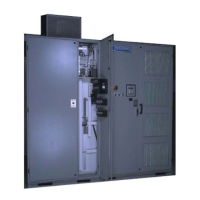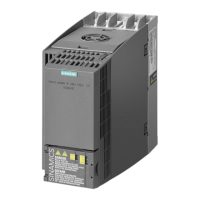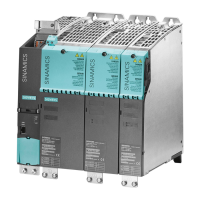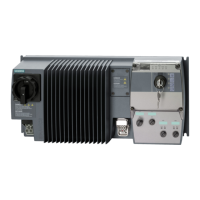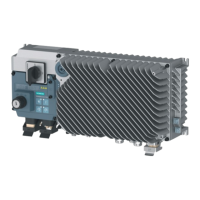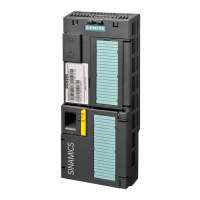8.20.2 Master-Slave Drive Control
The master-slave conguration allows two or more motors that are mechanically coupled
together to share load equally. In this implementation, one drive is designated as master, while
one or more drives are designated as slave drives. Speed regulation is performed in the master
drive, and the slave drives(s) control torque based on a remote torque command from the
master. This mode of operation provides the following features:
• Ability to operate one induction motor per drive. Motors can be coupled on a common motor
shaft, through a gear box driving a common load or on a common drive belt.
• Ability to operate multiple drives (maximum of four) with a single three-phase synchronous
motor or a multi-phase synchronous motor.
• The master VFD can be determined from a digital input signal. This signal along with the drive
fault and drive torque control can be used to recongure the system such that the slave can
become the master in case the master drive has a fault.
• The system can be implemented using conventional analogue speed and torque signals as
well as discrete I/O. An alternate implementation using serial communications between the
customer control and the drives is also possible.
3RZHU
&LUFXLW
0RWRU
&RQWURO
&XUUHQW)HHGEDFN
9ROWDJH)HHGEDFN
9)'
0DVWHU
3RZHU
&LUFXLW
&RQWURO
&XUUHQW)HHGEDFN
9ROWDJH)HHGEDFN
9)'
6ODYH
7RUTXH&RPPDQG
'LJLWDO,QWHUORFNV
&XVWRPHU
&RQWUROV
Figure 8-25 Example of Master-Slave Drive Control
Advanced Operating Functions
8.20 Paralleling Multiple Drives
NXGPro+ Control Manual
318 Operating Manual, A5E50491925A
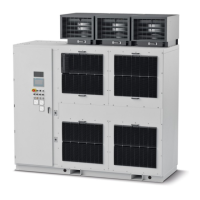
